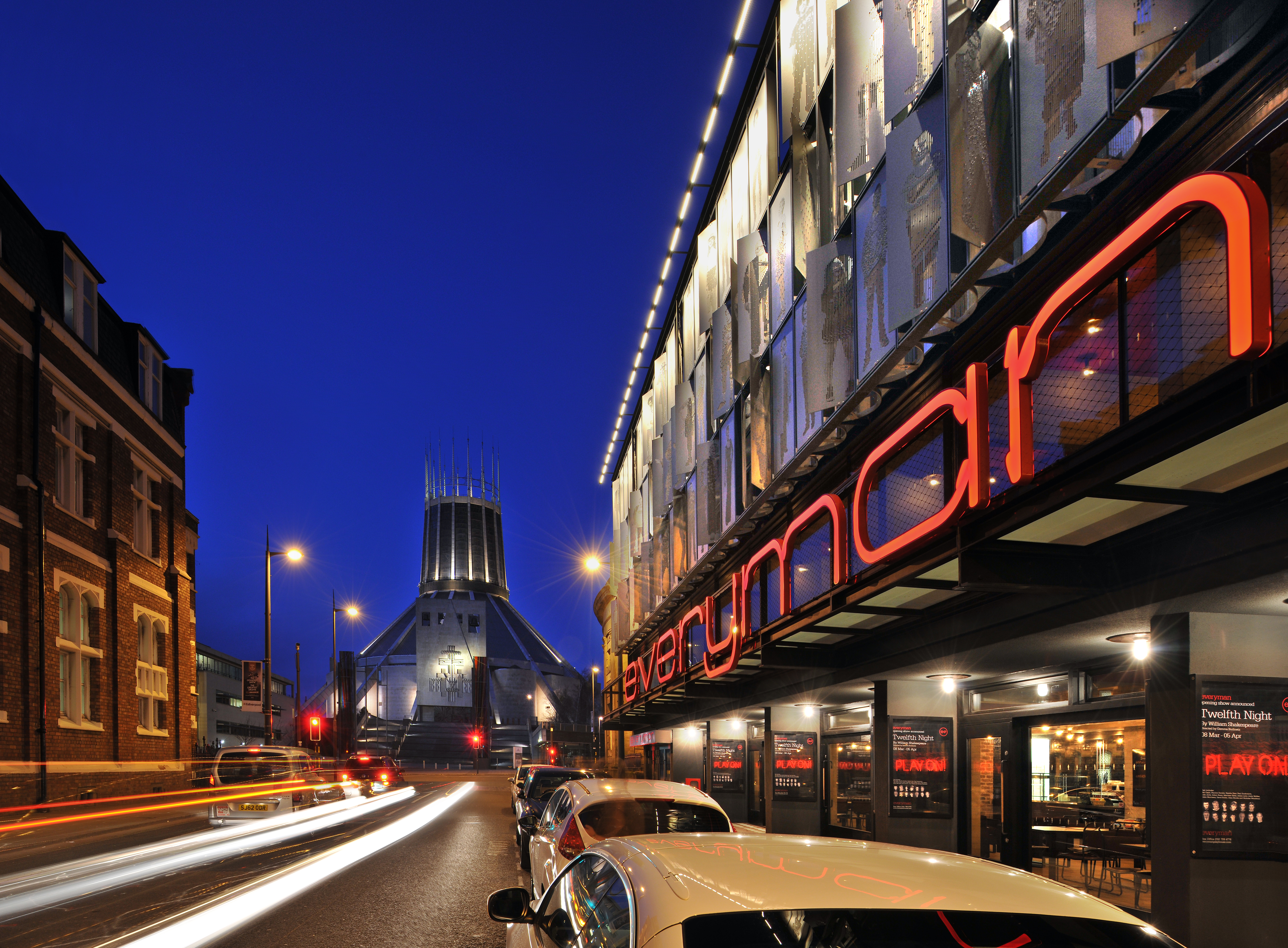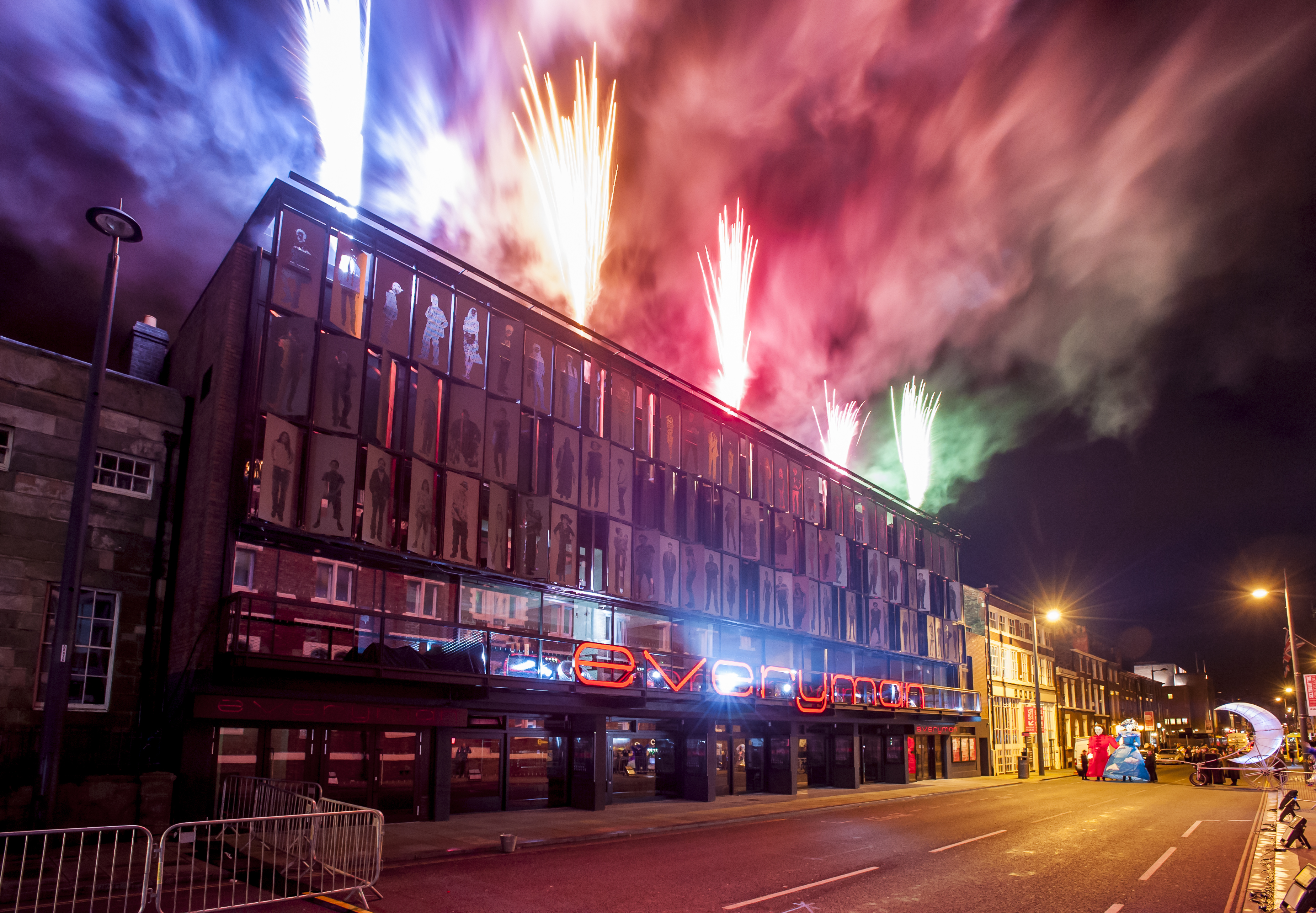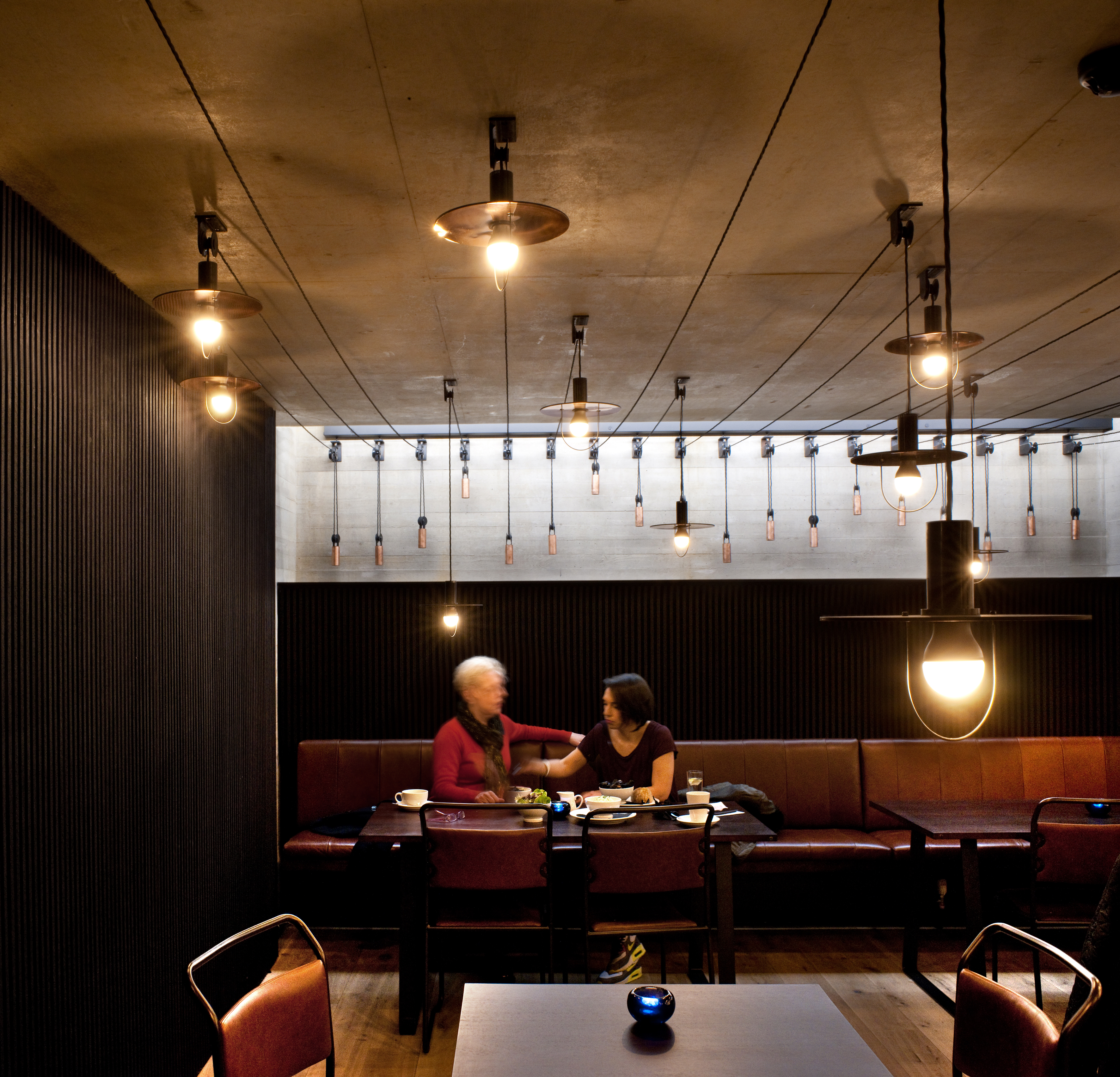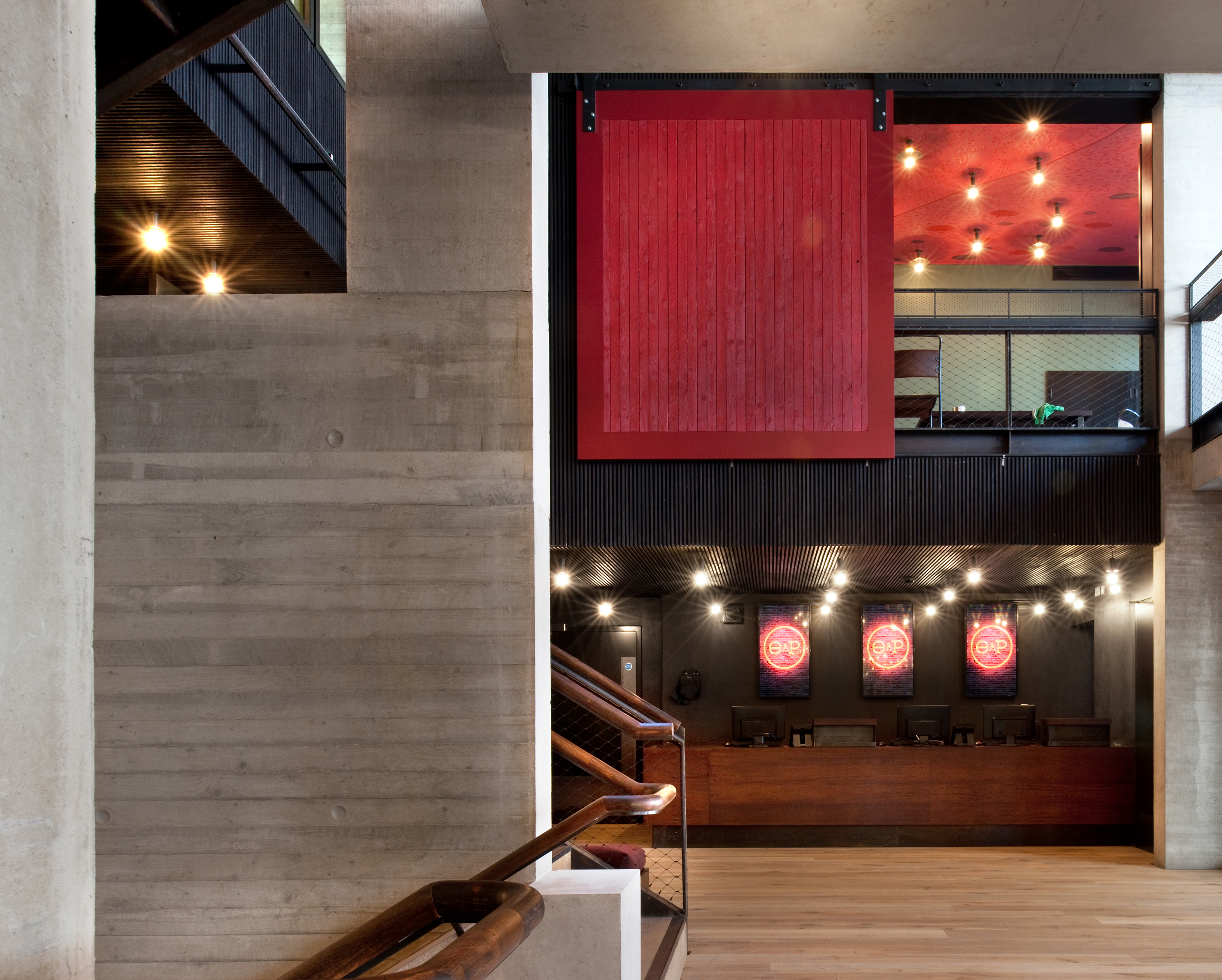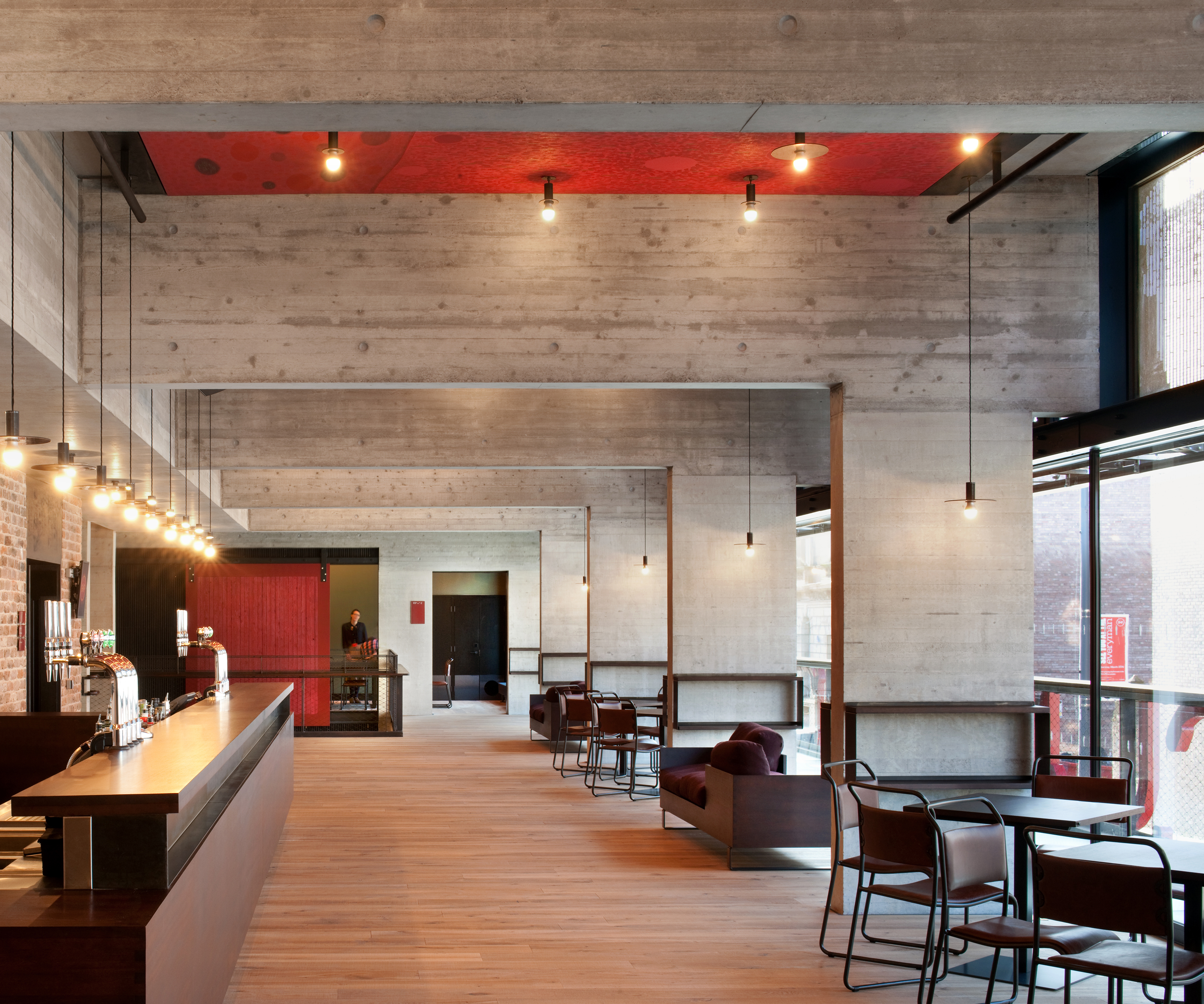The new Everyman Theatre in Liverpool by Haworth Tompkins has won the coveted RIBA Stirling Prize 2014 for the best building of the year. Now in its 19th year, the RIBA Stirling Prize is the UK’s most prestigious architecture prize.
The presentation of the RIBA Stirling Prize trophy to Haworth Tompkins took place at a special ceremony on October 16 at the Royal Institute of British Architects in London.
The old Everyman Theatre in Liverpool opened in 1964 in the shell of a 19th-century chapel on one of Liverpool’s main streets. Although a much-loved institution, the building itself was in a state of disrepair.
The decision to pull the theater down and replace it with a new one has been a nine-year project for the architects Haworth Tompkins. They have expertly met a difficult challenge: that of creating an entirely new and sustainable building, while retaining and revitalizing the best-loved features of its predecessor.
The architects were tasked with ensuring that the soul of the old Everyman, one of informality and community ownership—the "theatre of the people"—was carried into the new building. The result is a new building with a striking exterior and elegant interior, all with exceptional attention to detail and sustainability credentials.
RIBA President Stephen Hodder said:
“The success of this exceptional new building lies in the architect’s close involvement with the local community throughout the project. Haworth Tompkins have struck the perfect balance between continuity and change to win the hearts and minds of the people of Liverpool with the vibrant new Everyman. Complementing beautifully with the surrounding listed buildings, it is a ground-breaking example of how to build a daring bold and highly sustainable large public building in a historic city centre. The building exceeds expectations and I am delighted to present Haworth Tompkins with the 2014 RIBA Stirling Prize.”
The judges' citation for the RIBA Stirling Prize winner:
“The new Everyman in Liverpool is truly for every man, woman, and child. It cleverly resolves so many of the issues architects face every day. Its context—the handsome street that links the two cathedrals—is brilliantly complemented by the building’s scale, transparency, materials, and quirky sense of humour, notably where the solar shading is transformed into a parade of Liverpudlians. The ambience of the theatre is hugely welcoming with three elegant and accessible public foyers for bars, lounges and café/bistro. Clever use of materials with interlocking spaces and brilliant lighting make this an instantly enjoyable new public space for the city."
"It is exceptionally sustainable; not only did the construction re-use 90% of the material from the old theater, but all spaces are naturally ventilated including the auditorium with its 440 seats. Clever, out of sight concrete labyrinths supply and expel air while maintaining total acoustic isolation. It is one of the first naturally ventilated auditoria in the UK. The generosity of its public spaces, which, on a tight site, are unexpected and delightful, are used throughout the day and night. As Howarth Tompkins’ first completely new theatre, it is a culmination of their many explorations into the theatre of the 21st century. It is ground-breaking as a truly public building, which was at the heart of the client’s philosophy and ethos. In summary, an extraordinary contribution to both theatre and the city, achieved through clever team working—client, architect, consultants, and contractor—where the new truly celebrates the past.”
This is the first time Haworth Tompkins has won the RIBA Stirling Prize. The firm was previously shortlisted in 2007 for London’s Young Vic theatre. The Everyman is its first new-build theater, among a portfolio of over a dozen theaters from the Royal Court in 2000 to the recent temporary "Shed" outside the National Theatre. Its other projects include a secondary school in Birmingham and Coin Street Community Centre in London. The practice is currently working on a regeneration project in Canning Town and a housing development in Stratford, East London.
The Everyman Theatre was chosen by the judges from the following outstanding shortlisted entries:
-
Library of Birmingham by Mecanoo
-
London Aquatics Centre by Zaha Hadid Architects
-
London School of Economics - Saw Swee Hock Student Centre by O’Donnell + Tuomey Architects
-
Manchester School of Art by Feilden Clegg Bradley Studios
-
The Shard by Renzo Piano Building Workshop
The judges for the 2014 RIBA Stirling Prize were: Spencer de Grey (Chair) - architect, Foster and Partners; MJ Long - architect, Long and Kentish Architects; Cindy Walters - architect, Walters and Cohen; Stephen Kieran – architect, Kieran Timberlake; and Sir Timothy Sainsbury architectural patron and client.
The winners of three other annual RIBA awards were also announced:
-
Stormy Castle, Gower Peninsula, Wales, by Loyn & Co., won the 2014 RIBA Manser Medal for the best new private home
-
House No 7, Isle of Tiree, Scotland, by Denizen Works won the RIBA’s 2014 Stephen Lawrence Prize for best project with a construction budget of less than £1 million
-
Manchester Metropolitan University won the 2014 RIBA Client of the Year. The award recognizes the role good clients play in the delivery of fine architecture.
Related Stories
| Mar 11, 2011
Community sports center in Nashville features NCAA-grade training facility
A multisport community facility in Nashville featuring a training facility that will meet NCAA Division I standards is being constructed by St. Louis-based Clayco and Chicago-based Pinnacle.
| Mar 11, 2011
Slam dunk for the University of Nebraska’s basketball arena
The University of Nebraska men’s and women’s basketball programs will have a new home beginning in 2013. Designed by the DLR Group, the $344 million West Haymarket Civic Arena in Lincoln, Neb., will have 16,000 seats, suites, club amenities, loge, dedicated locker rooms, training rooms, and support space for game operations.
| Mar 10, 2011
Steel Joists Clean Up a Car Wash’s Carbon Footprint
Open-web bowstring trusses and steel joists give a Utah car wash architectural interest, reduce its construction costs, and help green a building type with a reputation for being wasteful.
| Mar 10, 2011
How AEC Professionals Are Using Social Media
You like LinkedIn. You’re not too sure about blogs. For many AEC professionals, it’s still wait-and-see when it comes to social media.
| Mar 9, 2011
Hoping to win over a community, Facebook scraps its fortress architecture
Facebook is moving from its tony Palo Alto, Calif., locale to blue-collar Belle Haven, and the social network want to woo residents with community-oriented design.
| Mar 9, 2011
Winners of the 2011 eVolo Skyscraper Competition
Winners of the eVolo 2011 Skyscraper Competition include a high-rise recycling center in New Delhi, India, a dome-like horizontal skyscraper in France that harvests solar energy and collects rainwater, and the Hoover Dam reimagined as an inhabitable skyscraper.
| Mar 9, 2011
Igor Krnajski, SVP with Denihan Hospitality Group, on hotel construction and understanding the industry
Igor Krnajski, SVP for Design and Construction with Denihan Hospitality Group, New York, N.Y., on the state of hotel construction, understanding the hotel operators’ mindset, and where the work is.
| Mar 3, 2011
HDR acquires healthcare design-build firm Cooper Medical
HDR, a global architecture, engineering and consulting firm, acquired Cooper Medical, a firm providing integrated design and construction services for healthcare facilities throughout the U.S. The new alliance, HDR Cooper Medical, will provide a full service design and construction delivery model to healthcare clients.
| Mar 2, 2011
Design professionals grow leery of green promises
Legal claims over sustainability promises vs. performance of certified green buildings are beginning to mount—and so are warnings to A/E/P and environmental consulting firms, according to a ZweigWhite report.
| Mar 2, 2011
Cities of the sky
According to The Wall Street Journal, the Silk Road of the future—from Dubai to Chongqing to Honduras—is taking shape in urban developments based on airport hubs. Welcome to the world of the 'aerotropolis.'


